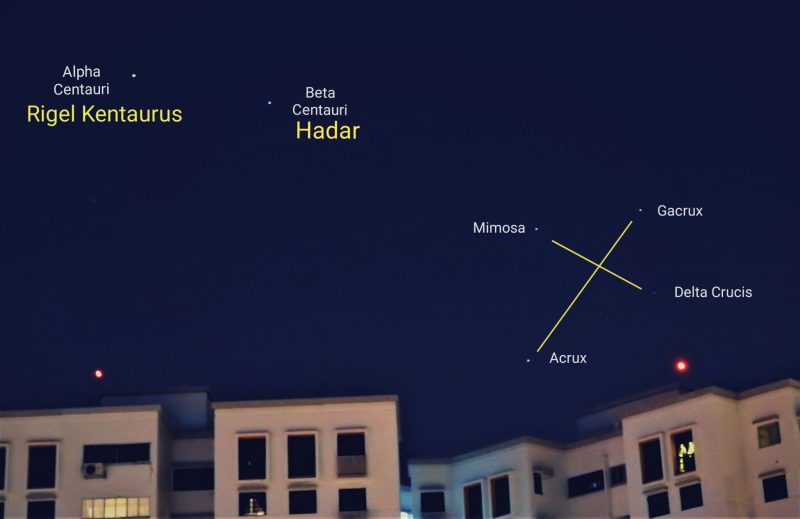
The Southern Cross – also known as Crux – is an iconic constellation for people south of the equator. It’s visible every clear night, and its stars shine brightly enough to be picked out pretty easily even from urban locations.
If you’re in the Northern Hemisphere, you too can see the famous Southern Cross. You just need to be far enough south, and know where and when to look.
Where can you see the Southern Cross?
At 35 degrees south latitude and all latitudes farther south, you can see the Southern Cross all night, all year round. In that part of the Southern Hemisphere, the Southern Cross is circumpolar: it is always above the horizon, as it circles the sky close to the celestial pole.
However, for much of the Northern Hemisphere – including most of the United States – the Southern Cross can never be seen. It never rises above the horizon.
You can see see all of Crux from the U.S. state of Hawaii. In the contiguous U.S., you need to be in southern Florida or Texas (about 26 degrees north latitude or farther south). Even from the far-southern contiguous U.S., you have a limited viewing window for catching the Southern Cross. It has to be the right season of the year. It has to be the right time of night. And you have to look in the right direction: south!

When to look?
For the Northern Hemisphere’s tropical and subtropical regions, May is a good time to find Crux in the evening sky. It is visible in other months, but not at such a convenient time. In March, you have to wait until about 1 a.m. to catch the Southern Cross at its highest elevation. In December and January, you have to catch it before dawn.
No matter the hour or date, Crux climbs to its highest point in the sky when it’s due south. The Cross is fairly easy to visualize, because it stands upright over the horizon.

Use the Big Dipper as a guide.
Although the Big Dipper is a fixture of Northern Hemisphere skies, it has a close kinship with the Southern Cross. The Big Dipper and the Southern Cross are highest in the sky at the same time of year.
Remember, spring up and fall down: the Big Dipper soars highest in the sky during the Northern Hemisphere’s spring. When the Big Dipper is seen above Polaris, the North Star, the Southern Cross can be seen standing over the southern horizon in Texas and southern Florida.
In the Southern Hemisphere it works the same way, just in reverse. The Big Dipper can be seen in the Southern Hemisphere from about 26 degrees south latitude and all latitudes farther north. But to spot it, it has to be the right season and the right time of night. When the Southern Cross sails highest in the Southern Hemisphere sky, the “upside-down” Big Dipper is seen just above the northern horizon at latitudes near the tropic of Capricorn (23.5 degrees south latitude).

The Southern Cross in navigation.
When European sailors journeyed south of the equator, they found that the North Star had disappeared below the horizon. As they sailed even farther south, the Big Dipper dropped out of sight as well. Unlike the Northern Hemisphere, the Southern Hemisphere has no bright pole star to highlight the celestial pole. Fortunately, the Southern Cross acts as a navigational aid.
There are various ways to find the direction due south using the Southern Cross as a guide. For example, a line drawn from the star Gacrux through the star Acrux points in the general direction of the south celestial pole (the point in the sky directly above Earth’s south pole). Discover more ways to locate south using the Southern Cross.
Bottom line: The Southern Cross can be seen from the Northern Hemisphere, as long as you’re below 26 degrees north and know when and where to look!











